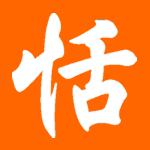Aside from the obviously painful Engrish translation, as a Chinese speaker myself, I am having a bit difficulty understanding the menus’ Chinese!
I did not know in order to enjoy a piece of steak in Hong Kong, I need to bring along my English/Chinese enigma machine.
Since it is in a menu, most English speakers would extract “Side Order(s)” out of “Sidersts”, but I am clueless about “西多士”. It turns out we are both wrong. The item is actually called "Western Style Toast", perhaps "French Toast" (or "Freedom Toast"). I would have never guessed it until Jon emailed me.
I have not idea what “the pearl picks” are; the Chinese caption is not helping either. At least I know it costs 16 Yuan ($1 = 8.0319 Yuan).
What is “Qient Lady”; perhaps it meant “Orient Lady”? I did know this restaurant also offer “that” kind of service. Can I take one to go please? Preferably fresh ones, not the ones got stuck inside a cargo container.
It is cryptic enough trying to figure out just what “J&J” stands for, the Chinese is not giving any clues.
Shout out to my boy Jon RAHOI in the HK for the photos, RESPECT. More at Jon’s site.
Related: Chinese government launchs site to advocate correct usage of English.


Reminds me of a menu I found in Hangzhou. I damn near pissed myself laughing when I read the menu and saw the title of a dish called "the wine smelt fucks the shrimp".
ReplyDeleteSome of them is just rediculus. How the heck did they get the word "rape" from 油菜, even if its direct translation they would get "oil vegetable". But man, funny stuff.
ReplyDelete四多士 (western style toast) - It sounds and makes more sense saying it in Cantonese. After all, it is a restaurant in HK.
ReplyDeleteafter living in China, I feel like I almost have an honourary degree in 'Chinglish'.
ReplyDeleteGood good study. Day day up.
No good meaning!
i don't think these are menus found in hk. as i am from hk myself, and i have not seen a menu that uses printed simplified chinese characters. and the only place that utilizes simplified chinese extensively, and regularly in everyday uses is mainland china. so i would automatically think these are menus that are from mainland china rather than from hk.
ReplyDeleteanonymous 2:38-
ReplyDeleteI can't read the Chinese, but "rape" is the name of the plant canola oil comes from, so "oil vegetable" would make sense.
If I'm not wrong, 多士 is the way the taiwanese translates toast.
ReplyDeleteIt sounds a bit like toast if you read it really quickly.
Problem occurs when people translate based on sounds instead of meaning.
And if you asked me to guess, I'd prolly say that pearl picks are some kind of pork chops or ribs, and orient lady is a kind of bubble tea?
:)
西多士 (western toast)is similar to 的士 (taxi) -- phonetically Cantonese sounding Chinese characters for western words that do not exist in Chinese. They don't make sense saying them in mandarin.
ReplyDelete土司 is how Taiwanese translates toast, not 多士.
ReplyDeleteRape (pronounced rah-pay) usually is shown described as brocolliu rape or borcolli rabe or raab. Chinese name is 油菜 (literally oil vegetable).
- Ken L.
Might "rape" refer to the rape plant (Brassica napus), the seeds of which are the source of "rape seed oil," a.k.a. Canola? That could certainly be considered an "oil vegetable."
ReplyDeleteC.H.